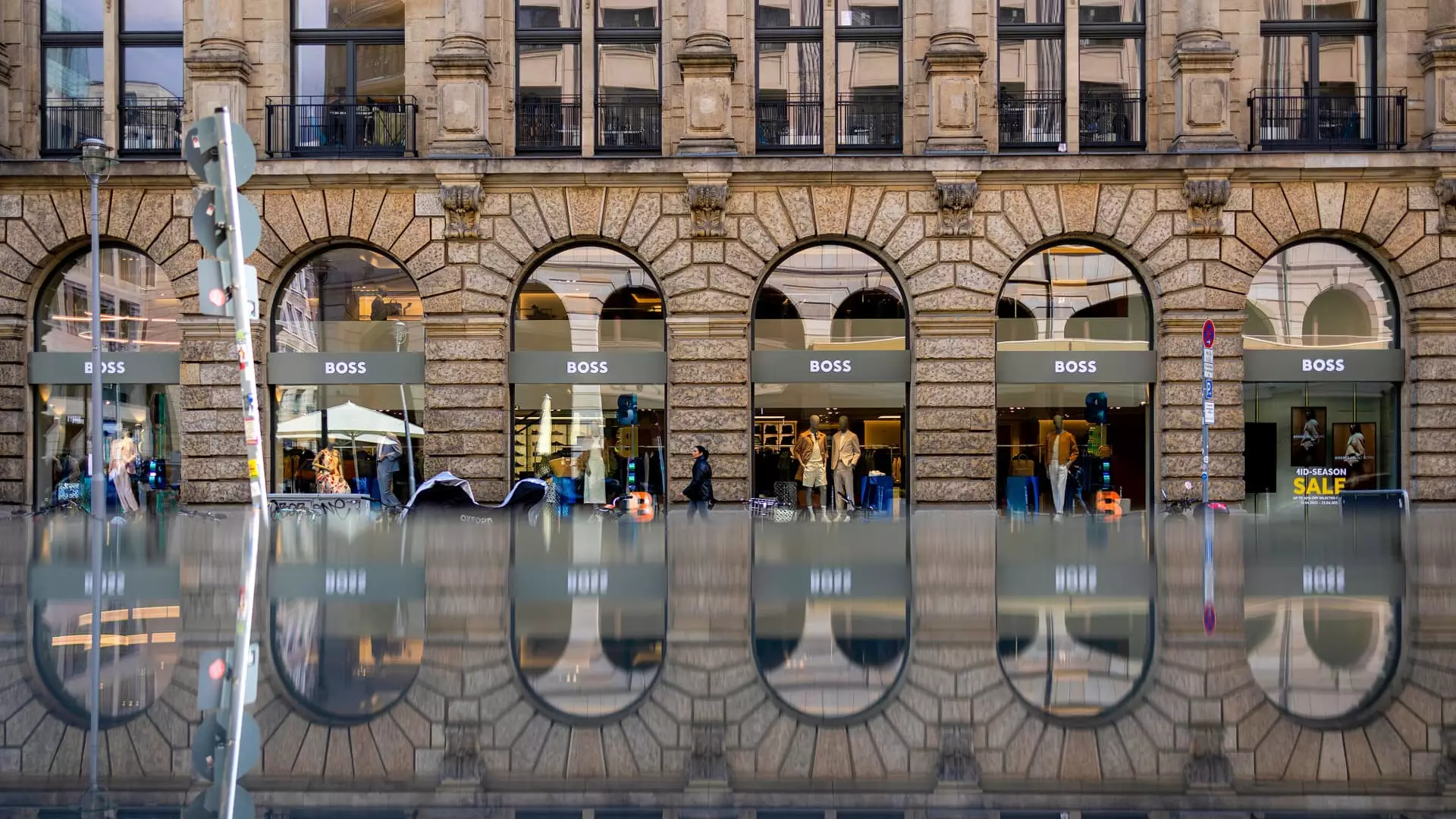Hugo Boss has recently shrugged off fears that many high-end retailers have been grappling with in the face of a tumultuous global economy. The company’s shares surged after it released first-quarter revenue figures that were more optimistic than analysts had anticipated, despite the broader backdrop of macroeconomic uncertainties and evolving tariff discussions. While a decline in sales, down 2% year-on-year, could be alarming for many, the reaction of the market indicates that investors see potential resilience in Hugo Boss’s business model. With sales hovering around €999 million ($1.13 billion), above the analyst expectation of €979 million, it appears that the luxury retailer is finding a way to navigate through stormy waters.
Consumer Behavior: The Unseen Challenge
The primary culprit for the sales decline appears to be the waning consumer demand in the Asia-Pacific region, particularly in China. The statement made by CEO Daniel Grieder about a “more uncertain consumer outlook” speaks volumes about the shifting landscape of consumer behavior, especially in luxury retail. Chinese consumers, once fervent buyers of high-end brands, seem to be adopting a more cautious approach towards discretionary spending. This shift in consumer sentiment isn’t merely a localized issue; it suggests a broader change in global consumer attitudes towards luxury goods, raising questions about how sustainable the luxury market truly is in these uncertain times.
Guidance Amidst Uncertainty
What stands out in Hugo Boss’s approach is its commitment to its 2025 outlook, projecting sales to be consistent with the previous year’s performance at €4.2 billion to €4.4 billion. This confidence emanates not from a place of naivety but from a strategic awareness of market dynamics. Unlike many firms that may panic in the face of setbacks, Hugo Boss appears to be making calculated moves to monitor the economic landscape proactively. The firm’s acknowledgment of external factors—such as tariff tensions—illustrates a broader trend among companies to be more Agile and responsive to their environments. By remaining vigilant, Hugo Boss is not only betting on recovery but also on evolving into a more resilient player in the luxury market.
Strategic Maneuvers in Supply Chain Management
One of the most intriguing facets of Hugo Boss’s strategy involves its supply chain realignment. With the U.S. market representing about 15% of its revenues yet lacking domestic manufacturing, Grieder reported plans to redirect imports from China to alternative markets. This speaks to the growing need for companies to be flexible and nimble in their operations, especially amidst tariff uncertainties and potential disruptions. Such proactive measures could yield long-term benefits, helping Hugo Boss to hedge against further risks while ensuring that they increase both efficiency and market adaptability.
Potential for Growth in Women’s Fashion
Despite its recent challenges, particularly in women’s fashion, there exists vast untapped potential for growth within Hugo Boss. Analyst observations suggest that while the company has made strides in diversifying its offerings, the women’s segment remains underwhelming. This gap in a critical market segment represents an opportunity that, if addressed effectively, could significantly boost overall brand performance. The suggestion that acquiring an established female-oriented fashion brand could accelerate growth reveals an underlying truth: the luxury market is shifting more towards inclusivity and diversity in fashion. Consumers today are looking for more than just designer labels; they want brands that resonate with their identities and lifestyles.
Fairly assessing these dynamics, it’s clear that while Hugo Boss faces considerable headwinds from changes in consumer behavior and global market instability, it also finds itself at a pivotal juncture. The company’s resilience, proactive strategic decisions, and potential avenues for diversification in product offerings suggest that the fortune might not be as grim as some predict. While there is uncertainty ahead, it is equally true that the brand has the tools to navigate this labyrinth of challenges effectively, making it a retailer to watch closely in the coming quarters.

